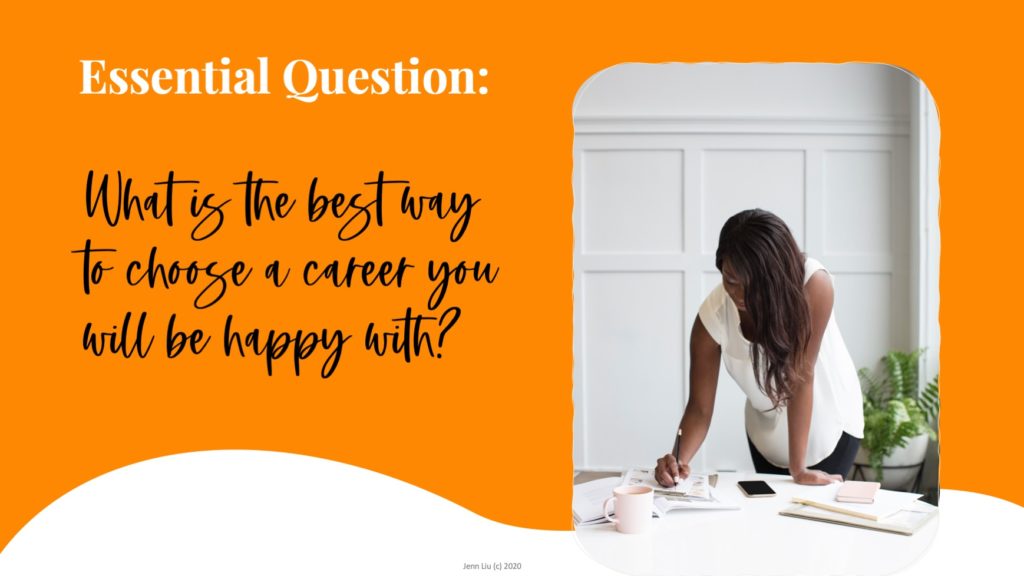When asking your students what they want to do for a career, does any of this sound familiar…
“IDK. Beats me.”
“It’s too hard to choose a career right now.”
“I have no idea what I’d be good at.”
Chances are, you’ve heard at least a few students say one of the above when thinking about choosing a career.
We all want to help our students succeed in life.
We want them to choose a career they will love and forge a path toward pursuing their dream career.
The funny thing is, though, we tell our students to set goals and “dream big” but often forget most students have limited knowledge of their different career options, due to limited life experiences and influences in their lives.
For example, many students say they want to be a nurse but don’t know about the 50+ other careers in the medical field. This is why students need opportunities for career exploration.
Career exploration through hands-on opportunities helps students align their postsecondary plans with their career aspirations and begin their career planning early.
As a result, students with at least some idea of possible future careers for them will be more likely to set goals, take higher-level classes, and be more motivated to do well in school and persevere.
So how do you help students choose a career?

Here are six steps to follow:
1. Guide Students in Self-Reflection
Start by getting students to think of what they enjoy. For example, you could ask students to make a list of everything they love, what brings them joy, and what they are curious about. This might be hard at first so asking students to think and do a “quickwrite” (write fast without censoring) about any of the following will help:
- What I Enjoy Doing the Most
- What I Was Doing the Times I Lost Track of Time
- A Time I Had a Lot of Fun
- Things I Would Want to Do Again
- Things I Am Curious About or Want to Learn More About
2. Give Students Self-Assessments
Have students take reliable, well-known tests to learn their strengths, skills, and personality type. The RIASEC test, developed by John Holland, can give them an idea of which jobs would suit their interests and talents. I recommend using CollegeBoard’s user-friendly version of this test!
Then the Myers-Briggs, a personality test created by Isabel Myers and Katharine Briggs, can help them find careers suited to their personalities.
3. Have Students Research Careers
Tell students to look over the careers suggested for them by the assessments, but discourage them from eliminating possible careers before they learn a little more.
Consider having students choose and read about at least 10 of the careers suggested for them.
The Occupational Outlook Handbook is a good source to look for more information.
4. Help Students Narrow Down Their Career Lists
To help students narrow down their lists, ask them to think about their likes and dislikes, talk to other people to learn more, and ask these questions:
- Would this be something I really love doing?
- Is the job outlook good (at least 5% growth in the next 10 years)?
- Can I make enough money for a decent living and the kind of lifestyle I want?
- Am I willing to go through the required training/schooling?
- Can I see myself in this work environment?
- Is there room for advancement in this job?
5. Teach Students about Ikigai
Ikigai is a Japanese theory, concept, and idea that originated in Okinawa, Japan and translates to “life purpose” or “reason for being.” It’s understood as the reason to get up every morning and is based on the idea that your life is valuable and can impact others.
Ikigai is determined by looking at the convergence of what you love, what the world needs, what you’re good at, and what you can get paid for.
6. Assign a Career Research Project
Once students have narrowed down their lists to a few careers, have them do further research and then share what they learn with each other. They can use this feedback to get their lists down to one career.
Then assign creative products and activities for sharing (e.g., posters, display boards, gallery walks, video infomercials or public service announcements, etc.).
Bonus Tips!
Help students to get hands-on experience in their chosen fields. Working with your guidance counselor, suggest or assign students to interview people working in their career choice, try job shadowing, tour a facility to get a feel for the work environment, and/or participate in a club, service-learning, or a summer camp or workshop in the field they’re interested in.
Students should be sure to plan appropriately by choosing high school classes related to their possible future career and start looking at part-time jobs, internships, and colleges with good programs in their field.
It’s also helpful to bring in guest speakers whenever possible, take students to a job fair, and teach students how to search for jobs, write a resume and cover letter, and prepare for a job interview. Mock interviews in class are always fun!
If you need good lessons to help your students with career exploration, check out my Career Exploration Bundle.
Choosing a career isn’t easy and chances are, your students will change careers multiple times in their lives. Our job as teachers or counselors is to get students thinking, exploring, and taking the best steps in the right direction. Knowing one’s career path can ensure applying to the right program, which can save time and money after graduation. Following the steps mentioned above can help your students get closer to their definition of success in life.
If you found this article helpful, share it with your teacher friends and colleagues!

Bold font